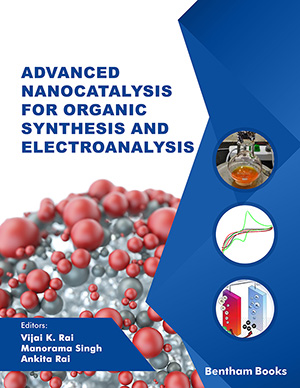
Abstract
The aromatic metalation - cyclization sequence is a valuable protocol for the regiospecific construction of carbocyclic and heterocyclic systems. Aromatic lithiation can be carried out by lithium - hydrogen or lithium - halogen exchange. The latter procedure, though mechanistically controversial, is the method of choice to introduce specifically a lithium atom into a given, non-activated position of the aromatic ring. Once generated, the aryllithiums may react with external or internal electrophiles and thus give rise to cyclization reactions, which are known as Parham cyclization. In addition to the carbon - carbon bond formation, the aromatic lithiation allows the introduction of further functionality to the molecule. Therefore, strategies based aromatic lithiation can play a crucial role in natural products synthesis. In this review we will survey some recent advances on the application of the aromatic lithiation - cyclization sequence for the synthesis of different types of carbocycles and heterocycles. We have limited it to the metalation reactions, where the aryl and hetero-aryllithium intermediates are generated by the metal - halogen exchange reaction. Major emphasis will be placed on stereoselectivity of the metalation - cyclization sequence, since it has received only sporadic attention.
Keywords: Heteroaryllithium Compounds, Halogen Exchange, Carbocyclic, sporadic, stereoselectivity
Current Organic Chemistry
Title: Aryl and Heteroaryllithium Compounds by Metal - Halogen Exchange. Synthesis of Carbocyclic and Heterocyclic Systems
Volume: 7 Issue: 3
Author(s): N. Sotomayor and E. Lete
Affiliation:
Keywords: Heteroaryllithium Compounds, Halogen Exchange, Carbocyclic, sporadic, stereoselectivity
Abstract: The aromatic metalation - cyclization sequence is a valuable protocol for the regiospecific construction of carbocyclic and heterocyclic systems. Aromatic lithiation can be carried out by lithium - hydrogen or lithium - halogen exchange. The latter procedure, though mechanistically controversial, is the method of choice to introduce specifically a lithium atom into a given, non-activated position of the aromatic ring. Once generated, the aryllithiums may react with external or internal electrophiles and thus give rise to cyclization reactions, which are known as Parham cyclization. In addition to the carbon - carbon bond formation, the aromatic lithiation allows the introduction of further functionality to the molecule. Therefore, strategies based aromatic lithiation can play a crucial role in natural products synthesis. In this review we will survey some recent advances on the application of the aromatic lithiation - cyclization sequence for the synthesis of different types of carbocycles and heterocycles. We have limited it to the metalation reactions, where the aryl and hetero-aryllithium intermediates are generated by the metal - halogen exchange reaction. Major emphasis will be placed on stereoselectivity of the metalation - cyclization sequence, since it has received only sporadic attention.
Export Options
About this article
Cite this article as:
Sotomayor N. and Lete E., Aryl and Heteroaryllithium Compounds by Metal - Halogen Exchange. Synthesis of Carbocyclic and Heterocyclic Systems, Current Organic Chemistry 2003; 7 (3) . https://dx.doi.org/10.2174/1385272033372987
| DOI https://dx.doi.org/10.2174/1385272033372987 |
Print ISSN 1385-2728 |
| Publisher Name Bentham Science Publisher |
Online ISSN 1875-5348 |
Call for Papers in Thematic Issues
Advances of Heterocyclic Chemistry with Pesticide Activity
Global food safety and security will continue to be a global concern for the next 50 years and beyond. Plant diseases have had a significant impact on food safety and security throughout the entire food chain, from primary production to consumption. While conventional chemical pesticides have been traditionally used for ...read more
Carbohydrates conversion in biofuels and bioproducts
Biomass pretreatment, hydrolysis, and saccharification of carbohydrates, and sugars bioconversion in biofuels and bioproducts within a biorefinery framework. Carbohydrates derived from woody biomass, agricultural wastes, algae, sewage sludge, or any other lignocellulosic feedstock are included in this issue. Simulation, techno-economic analysis, and life cycle analysis of a biorefinery process are ...read more
Catalytic C-H bond activation as a tool for functionalization of heterocycles
The major topic is the functionalization of heterocycles through catalyzed C-H bond activation. The strategies based on C-H activation not only provide straightforward formation of C-C or C-X bonds but, more importantly, allow for the avoidance of pre-functionalization of one or two of the cross-coupling partners. The beneficial impact of ...read more
Cutting-edge technology for the development of electrochemical sensors
Electrochemistry based point of care diagnostics is a powerful tool which can revolutionize the current concept of personalize health care industry. There have been several efforts to amalgamate cutting edge technologies (nanotechnology, surface technology, anti-biofouling strategies) while developing assays. The success of each electrochemical sensor is very dependable upon how ...read more
Related Journals
 21
21
- Author Guidelines
- Graphical Abstracts
- Fabricating and Stating False Information
- Research Misconduct
- Post Publication Discussions and Corrections
- Publishing Ethics and Rectitude
- Increase Visibility of Your Article
- Archiving Policies
- Peer Review Workflow
- Order Your Article Before Print
- Promote Your Article
- Manuscript Transfer Facility
- Editorial Policies
- Allegations from Whistleblowers
- Announcements
























